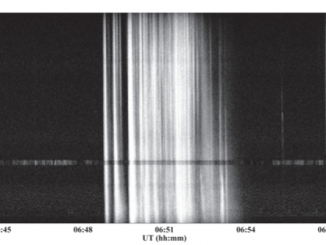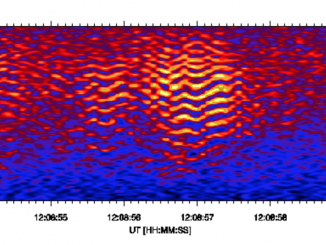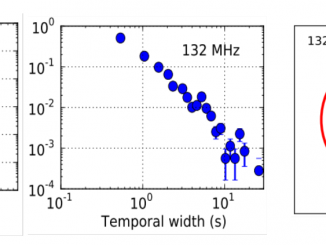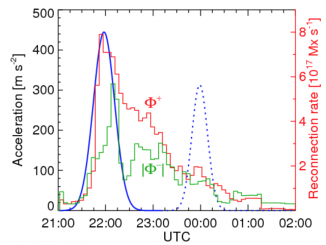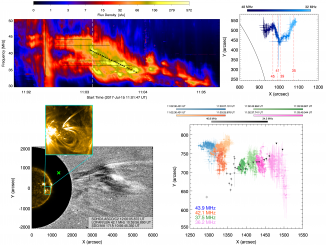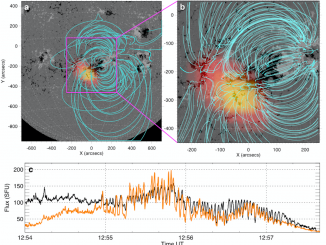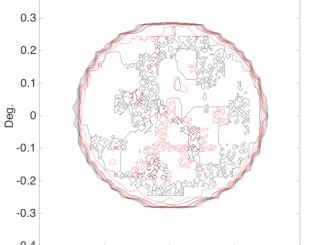Observations of fragmented energy release during solar flare emission
by R. Ramesh et al.*
Type III radio bursts from the Sun are signatures of energetic (∼1–100 keV) electrons, accelerated at the reconnection sites, propagating upward through the corona into the interplanetary medium along open magnetic field lines. The emission mechanism of the bursts is widely believed to be due to coherent plasma processes. The bursts are observed typically in the frequency range $\approx 1\,$GHz$ – 10\,$kHz, which corresponds to radial distance range between the […]

